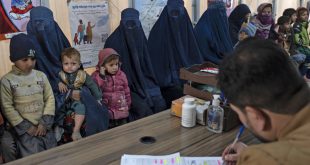AT News
KABUL – UN experts have highlighted the persistent threat posed by the Islamic State group across its former strongholds in Syria, Iraq, and Afghanistan. The report, circulated on Monday, indicates that the group still maintains a membership ranging between 5,000 and 7,000 in Syria and Iraq. Its fighters are identified as the most significant terrorist threat in Afghanistan today.
The monitoring panel, responsible for overseeing sanctions against the group, noted that the danger from the Islamic State remained “largely elevated in conflict zones while being relatively subdued in non-conflict areas” during the first half of 2023. Despite facing notable losses in leadership and reduced activities in Syria and Iraq, the risk of the group’s resurgence remains.
The experts detailed how the Islamic State has evolved its tactics, embedding itself within local populations. The group has demonstrated caution in selecting battles that minimize losses, while simultaneously rebuilding and recruiting from camps in the northeastern region of the Syrian Arab Republic. Vulnerable communities, including those in neighboring countries, have also been targeted for recruitment.
The Islamic State initially declared a self-proclaimed caliphate across extensive territory in Syria and Iraq in 2014. While its defeat was declared in Iraq in 2017 after a three-year battle, sleeper cells continue to operate in both countries.
Despite counter-terrorism efforts, the group still commands a substantial membership of “mostly fighters” ranging between 5,000 and 7,000 in Iraq and Syria. The group’s attacks have been intentionally scaled back to facilitate recruitment and reorganization, according to the experts.
In northeast Syria, the Kurdish-led Syrian Democratic Forces are detaining around 11,000 suspected Islamic State fighters. These detainees, hailing from various nationalities, including Iraq and nearly 70 other countries, pose a complex challenge for the region.
Additionally, the report sheds light on dire conditions in two closed camps, al-Hol and Roj, where approximately 55,000 individuals with alleged ties to the Islamic State are enduring significant humanitarian hardships. Notably, the majority of this population consists of children, with more than 11,800 Iraqis and nearly 16,000 Syrians.
The experts also highlighted the group’s recruitment of children through its “Cubs of the Caliphate” program, with over 850 boys, some as young as 10, detained in rehabilitation centers in the northeast.
Shifting focus to Afghanistan, the experts underscored that the Islamic State group presents the most serious terrorist threat to the country and the broader region. The group’s operational capabilities have reportedly increased, with an estimated 4,000 to 6,000 fighters and family members currently in Afghanistan.
In Africa, positive developments were noted, with regional forces disrupting the IS affiliate in Mozambique’s Cabo Delgado province. The affiliate’s male fighters have been reduced to 180-220 from a previous count of 280. However, concerns persist over potential exploitation of political violence and instability by groups like Daesh in conflict-ridden Sudan.
In the Sahel region of Africa, the Daesh affiliate has gained greater autonomy and played a significant role in escalating violence. The report points to increased IS attacks in Mali, Burkina Faso, and Niger, in conjunction with other terrorist groups.
 Afghanistan Times
Afghanistan Times




